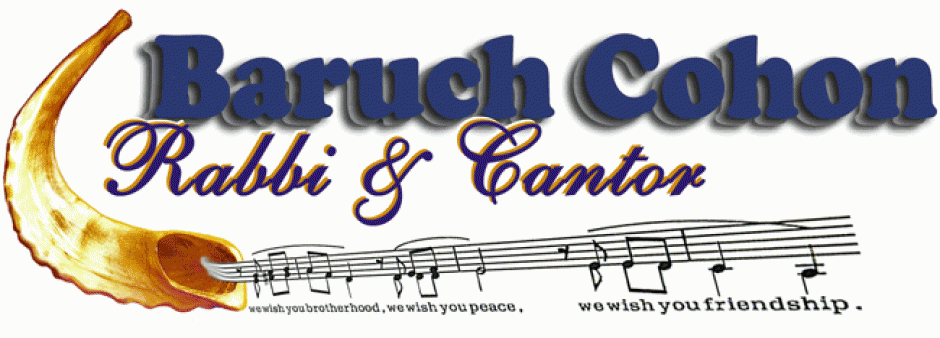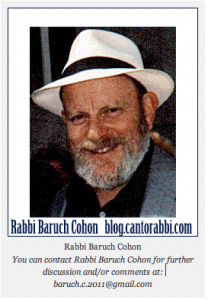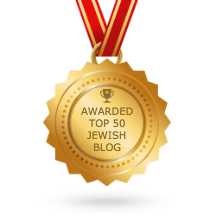TWO BRIDEGROOMS – Simkhas Torah – by Rabbi Baruch Cohon
This week we will conclude our 9-day autumn festival. Starting with building the Succah to celebrate the harvest season, and continuing with the Shmini Atzeres holiday with its memorial to our departed, we come to one of the happiest days on our calendar, Simkhas Torah – “Rejoicing in the Law!” In Jewish life, the law is not just a burden to be endured, but a glorious gift to be celebrated. On this day, we don’t only march with the Torah, we dance with it. We sing to it. We toast it! In fact, in most traditional synagogues the priestly benediction is recited in the Shakharit service – before Torah reading – instead of in Musaf, where it usually appears, after Torah reading. Why? Because of the custom that every man in Shul is called to an Aliya – to bless the Torah – and after he does that Mitzvah he is given a l’khyim, a holiday drink. So just in case some of the Cohanim might not be 100% sober after that, we pronounce the blessing earlier.
Another feature of the Simkhas Torah service concerns just two participants directly. But in reality, it offers its message to all of us indirectly. That special feature occurs when we read from each of two Torah scrolls that are prepared for this occasion. One scroll is set at end of the book of Deuteronomy, and other at the beginning of Genesis. Torah reading never stops, and Simkhas Torah dramatizes that continuity. We read the last section in one scroll, and follow it immediately with the first section in the second scroll. To bless the end reading, one member is honored with the Aliya called Khosson Torah – “the bridegroom of the Torah” – and he witnesses the reading of the very end of Moses’ blessing of his people, followed by the narrative of Moses climbing to a special place on Mount Nebo, from where G-d shows him the entire country that his people will enter and possess. Then Moses dies, and is buried by Divine hands. “No one knows his burial place, to this day.” The text continues to describe his successor Joshua as “full of the spirit of wisdom, because Moses placed his hands on him.” So the people accepted his leadership. But “no prophet ever arose in Israel like Moses, who knew G-d face to face.”
Now the reading recalls how Moses brought power and spectacle into reality “in the eyes of all Israel.” The Bridegroom of the Torah recites the final blessing, and the Torah scroll is lifted for the congregation to see and acknowledge. Then the second scroll is opened, and the Bridegroom of Genesis pronounces the blessing. Incidentally, the two readings are quite equal in length: one chapter plus 3 verses.
The Genesis Bridegroom’s reading is the story of Creation, a preview of the portion for the coming Shabos. From the familiar “In the beginning” it continues to the sanctification of the seventh day, when G-d finished the work on “all that G-d created to achieve.” The Bridegroom of Genesis then completes his honor with his second blessing, and the service continues.
Of course, this is only one feature of the pageant that is traditional to Simkhas Torah. Traditional synagogues see all their Torah scrolls taken from the ark and paraded around the shul seven times, amid a lot of singing and some dancing — even by those with two left feet – all this before the reading starts. Then if too many people are present to honor in one reading, some Torah scrolls may be taken to other rooms to facilitate multiple readings, to honor all those eligible, including kol han’orrim” when all the minor youngsters gather under one Tallis, and one adult recites the blessing.
Humor is a favorite feature of this holiday, too. Some people wear the most unexpected clothes to shul to invite their friends’ laughter. As to l’khyims – we don’t talk about that…
What we should talk about, and think about, is a simple lesson we could take home with us. Each one of us, youth, parents, grandparents or just Jews, has a double function. You and I can realize that we are both “bridegrooms of the Torah” and also “bridegrooms of Genesis.” As Torah bridegrooms we respect the past. We don’t live in the past but we learn from it. And as “bridegrooms of Genesis” we head for a creative future. What can I do, or improve, or create that will help those I love? What will honor my ancestors’ memory? Will my work carry forth an inspiration from the past? Our challenge in this dual role is to fuse heritage with adventure. Welcome opportunity and apply noble rules.
Not an easy role, this fusion of past and future. But an exciting one. Worth celebrating on this Simkhas Torah.


